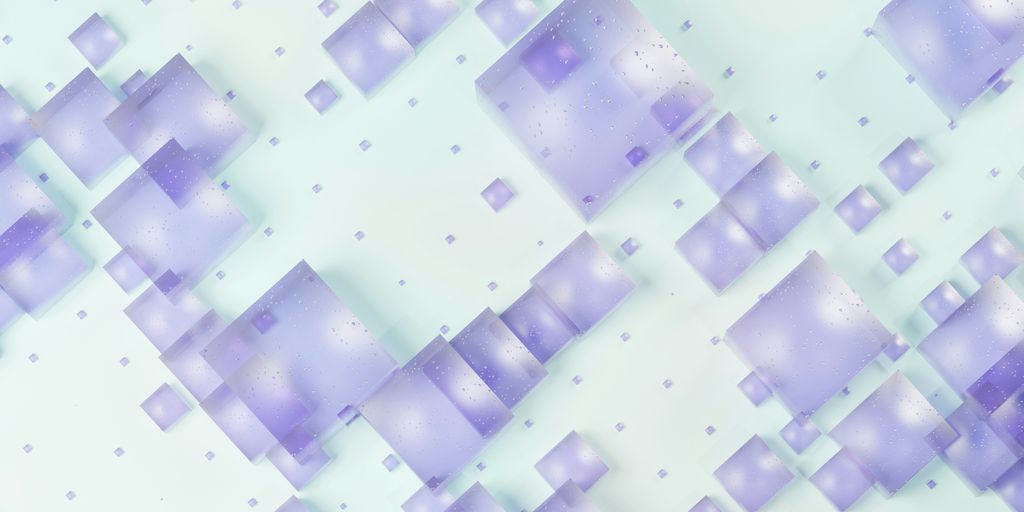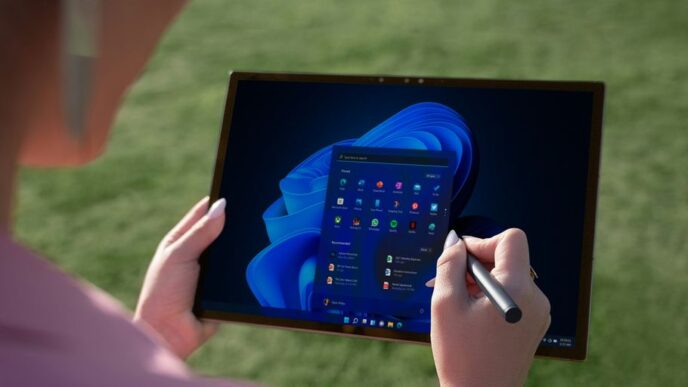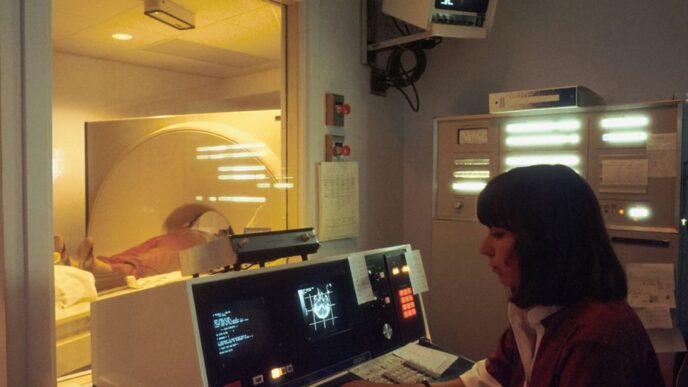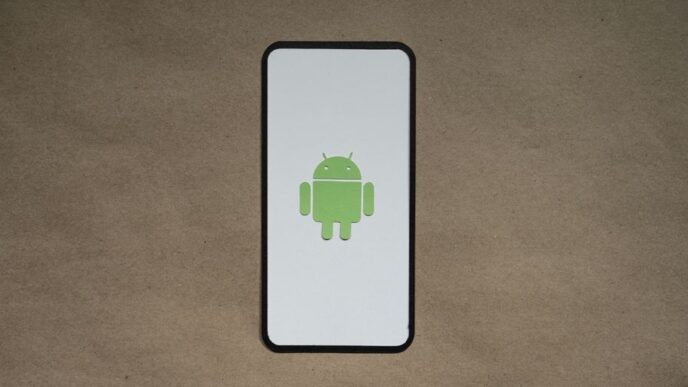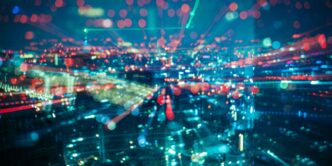Artificial intelligence has really changed things, and deepfake technology is a big part of that. These AI-generated videos and audio clips are getting scarily realistic, and they’re popping up everywhere. We’re seeing major leaps in how good they look and sound, which is exciting for things like movies and games. But, let’s be real, it also means new problems, especially with fake news and scams. So, understanding the latest deepfake AI news is super important for all of us.
Key Takeaways
- Deepfake AI is getting much better at creating realistic videos and audio, making it harder to tell what’s real.
- The increased realism of deepfakes brings serious risks, including more sophisticated scams and the spread of false information.
- New tools are being developed to help spot deepfakes, using AI to find the subtle clues that give them away.
- Despite the risks, deepfake technology also offers cool new ways to be creative in movies, education, and art.
- As these AI tools become easier for everyone to use, there’s a growing need for rules and ethical guidelines to prevent misuse.
Deepfake AI Breakthroughs and Enhanced Realism
It feels like every other week there’s some new AI development that blows my mind, and deepfake tech is definitely one of those areas. The progress in 2025 is pretty wild, mostly thanks to how much better generative adversarial networks, or GANs, have gotten. These aren’t just making slightly off-looking faces anymore; we’re talking about images and audio that are incredibly lifelike. It’s getting to the point where telling the difference between real and fake is becoming a real challenge.
Photorealistic Quality and Lifelike Audio
Seriously, the level of detail these new models can produce is something else. We’re seeing faces that look completely real, down to the smallest pores and expressions. And the audio? It’s not just robotic voices anymore; they can mimic specific people’s tones and inflections with surprising accuracy. A recent report from February 2025 actually stated that about 68% of the deepfake content they looked at was almost impossible to tell apart from genuine media. This jump in quality is what’s really opening up new possibilities, especially in entertainment where realistic digital characters and environments are becoming a big deal.
Seamless Blending of Synthetic Elements
Beyond just creating realistic individual elements, the real magic is happening in how these synthetic pieces are put together. AI can now take generated faces, voices, or even entire scenes and blend them into existing footage so smoothly that it’s hard to spot any seams. Imagine a historical documentary where a figure from the past is seamlessly integrated into a modern setting, speaking with a voice that sounds like it could have been recorded yesterday. This level of integration is what makes deepfakes so convincing and, frankly, a bit unnerving.
Advancements in Generative Adversarial Networks
The engine behind a lot of these improvements is the continued evolution of GANs. Think of it as a constant competition between two AI systems: one trying to create fakes, and the other trying to spot them. This back-and-forth pushes both sides to get better. The result is AI that’s not just good at making fakes, but also incredibly good at making them look and sound like the real deal. This ongoing development means the realism we’re seeing now is likely just the beginning, and we can expect even more sophisticated outputs in the near future.
The Growing Threats of Deepfake Technology
It feels like every week there’s a new story about how AI is getting scarily good at making fake stuff. And when it comes to deepfakes, the threat is definitely growing. We’re not just talking about silly face swaps anymore; these fakes are getting really convincing, and that’s where the real problems start.
Cybersecurity Risks and Social Engineering
Think about your email or even a phone call. Deepfakes are starting to mess with that. Instead of just trying to hack into systems with code, bad actors are using these fake videos and audio to trick people. They can make it look like your boss is asking you to transfer money, or sound like a family member in trouble asking for help. It’s like phishing, but way more personal and harder to spot. Some experts are saying that by the end of 2025, about a third of all cyber problems could come from these deepfake tricks. That’s a huge jump from before.
Misinformation and Political Manipulation
This is a big one, especially with elections and public opinion. Imagine seeing a video of a politician saying something outrageous they never actually said. Because these fakes look and sound so real, a lot of people might believe it. Studies show that a good chunk of people have seen deepfake content online and thought it was real. This can really mess with how people vote and what they believe about important issues. Governments are starting to pay more attention, trying to figure out how to stop this kind of fake news from spreading and keep people from being fooled.
Reputation Damage and Fraudulent Activities
It’s not just politicians who are at risk. Anyone can be targeted. A fake video or audio clip could make someone look bad, ruin their career, or even be used to commit fraud. We’ve already seen cases where fake videos of business leaders caused a lot of trouble, both for the people involved and their companies. Financial institutions are worried too, because someone could fake a CEO’s voice to approve a bad money transfer. Companies are trying to protect themselves by using things like digital watermarks and checking who is really talking, but it’s a constant battle to keep up.
Improved Detection Methods for Deepfake AI
It feels like every other day there’s a new AI tool that can make things look incredibly real, and honestly, it’s getting a bit wild out there. With all this advanced tech, figuring out what’s genuine and what’s not is becoming a real challenge. Thankfully, people are working on ways to spot these fakes.
Machine Learning and Neural Network Integration
So, how are folks trying to catch these deepfakes? A big part of it is using machine learning and neural networks. Think of it like training a super-smart detective. These systems look for tiny clues, little inconsistencies that a human eye might miss. They analyze things like how light hits a face, or if the audio perfectly matches the lip movements. It’s pretty amazing how much detail they can pick up on. In fact, platforms using these methods have seen a jump of about 40% in correctly identifying fake content compared to last year. That’s a pretty big deal when you consider how much stuff is out there.
AI Fingerprinting and Metadata Analysis
Another approach is like giving each piece of digital media a unique fingerprint. This involves looking at the metadata, which is basically the information about the file itself, and also trying to find unique patterns that AI might leave behind when it creates something. It’s a bit like forensic science for the digital world. By examining these subtle traces, we can get a better idea if something has been tampered with. It adds another layer of security to help us trust what we’re seeing and hearing online.
Adversarial Training for Enhanced Defense
Then there’s this idea called adversarial training. It’s kind of a cat-and-mouse game. Developers create AI models specifically to detect deepfakes, and then they train those models against other AI models that are designed to create even better deepfakes. It’s like practicing for a fight by sparring with someone who’s really good. This constant back-and-forth helps make the detection systems stronger and better prepared for whatever new tricks the deepfake creators come up with. It’s a smart way to stay ahead of the curve and keep the internet a bit safer. We’ve seen that about 60% of consumers have run into a deepfake video in the last year, so these detection methods are definitely needed.
Opportunities and Applications of Deepfake AI
It’s pretty wild how much deepfake AI is shaking things up, and not just in scary ways. Think about the entertainment world – it’s getting a serious upgrade. Filmmakers are using this tech to do some really cool stuff, like bringing historical figures back to life for documentaries or creating visual effects that look super real without costing a fortune. One studio even said they cut production costs by about a quarter by using deepfakes for background scenes and special effects. That’s a big deal.
Then there’s education and training. Imagine being able to practice for a really important job or a tricky situation without any real-world consequences. Deepfakes are making that possible with realistic simulations. For example, emergency teams are using these AI-generated scenarios to get ready for crises. Reports show this leads to better decision-making and quicker responses when it actually happens. It’s a smart way to get people ready for tough jobs.
And let’s not forget about art. Artists are totally jumping on the AI bandwagon, using deepfakes to push creative limits. They’re mixing old art styles with digital tricks to make pieces that make you question what’s real and what’s not. It’s not just about making cool art; it’s also opening up new ways for artists to make money and connect with people online.
Accessibility of AI Tools and Emerging Concerns

It feels like just yesterday that AI tools were something only big tech companies or super-smart coders could really get their hands on. Now, though? Not so much. Advanced AI tools, including those that can create deepfakes, are becoming way more available to pretty much anyone. This is a double-edged sword, for sure. On one hand, it’s letting more people get creative in areas like art or making cool videos for fun. But on the other hand, it’s making it easier for folks with bad intentions to cause trouble.
Broader Audience Access to Advanced Tools
Think about it: what used to take a whole team of specialists and tons of expensive equipment can now be done with a decent computer and some readily available software. This democratization of powerful tech is exciting for innovation, but it also means the barrier to entry for creating sophisticated synthetic media has dropped significantly. We’re seeing more independent creators, students, and even hobbyists experimenting with these tools, which is great for pushing creative boundaries.
Concerns Over Ease of Access for Malicious Actors
This increased accessibility is precisely what worries cybersecurity experts. When tools that can generate highly convincing fake videos or audio become commonplace, the potential for misuse skyrockets. It’s not just about prank videos anymore; we’re talking about the ability to create fake evidence, impersonate individuals for scams, or spread targeted propaganda. A recent survey indicated that a significant majority of tech professionals are concerned about how easily these tools can be obtained and used for harmful purposes.
Rise in Fraudulent and Misinformation Activities
We’re already seeing the effects. Phishing scams are getting more personal and believable, often using voice or video clips that mimic someone you know. Political campaigns could be disrupted by fabricated statements from candidates, and individuals could find their reputations ruined by fake compromising material. The speed at which these deepfakes can be produced and distributed, combined with their increasing realism, presents a serious challenge to discerning truth from fiction in our digital lives. It’s becoming harder to trust what we see and hear online, and that’s a problem for everyone.
Regulations and Ethical Considerations for Deepfake AI
It feels like every week there’s a new development in AI, and deepfakes are right there in the thick of it. This rapid progress means governments and industry groups are scrambling to figure out rules and guidelines. It’s a tricky balance, you know? We want to let the cool, creative stuff happen, but we also really need to stop bad actors from causing trouble. Think about it – laws are popping up everywhere, with the EU leading the charge and US states introducing tons of new bills. Companies are feeling the pressure, especially since losses from deepfake fraud can be pretty significant, sometimes hundreds of thousands of dollars.
Balancing Regulation and Innovation
Trying to keep up with AI is like trying to catch lightning in a bottle. On one hand, we’ve got these amazing tools that can create incredible art, help with education, and even make movies cheaper. But on the other hand, the same tech can be used for scams, spreading lies, or ruining someone’s reputation. The goal is to create rules that don’t stifle the good uses while putting a stop to the harmful ones. It’s a tough line to walk, and honestly, nobody has all the answers yet. Some experts think that clear rules could cut down on misuse by a good chunk, maybe around 20% in certain areas within a couple of years.
Industry-Specific Compliance and Disclosure
Different businesses have different worries. For example, banks need to be extra careful with customer verification to avoid fraud. Healthcare providers have to think about patient privacy when using AI. Tech companies are being told they need to figure out how to spot fake content on their platforms. And in entertainment, there are talks about who owns the rights to someone’s digital likeness. Basically, everyone needs to be upfront about when AI is being used, especially if it looks like a real person or event. The EU AI Act, for instance, says that if you make deepfake content, you have to clearly say it’s artificial, and it needs to be marked so computers can tell too. This applies even if it’s for art or satire.
Employee Training and Vendor Due Diligence
Beyond the big laws, companies also need to get their own houses in order. That means making sure employees know what to look for – how to spot a deepfake, basically. It’s not just about having the tech to detect them, but also having people who understand the risks. Plus, if a company is bringing in outside AI tools, they really need to check out the vendors. You don’t want to accidentally use a tool that’s going to cause more problems than it solves. It’s about being prepared for threats and making sure everyone on the team is on the same page. It’s a lot to manage, but with the way things are going, it’s pretty necessary.
Future Predictions and Expert Opinions on Deepfake AI
Looking ahead to 2025, experts in the AI field have a mix of excitement and caution about where deepfake technology is headed. We’re seeing a lot of talk about how these tools will get even better, making videos and audio that are incredibly hard to tell from the real thing. Think about it – the realism is getting so good, it’s almost like magic.
Optimism Tempered by Cautious Outlook
Most folks agree that the potential for good is huge. Imagine more engaging movies, better training simulations for jobs, or even new ways to create art. But, and this is a big ‘but,’ everyone’s also worried about the bad stuff. The same tech that makes cool movie effects could be used to spread lies or trick people. It’s a bit like having a super powerful tool; you can build amazing things, or you can cause a lot of trouble.
Collaborative Efforts for Best Practices
Because of these worries, there’s a big push for people to work together. Tech companies, governments, and even regular users need to figure out the best ways to handle this. It’s not just about making the tech, but also about making rules and guidelines so it’s used responsibly. We’re likely to see more groups forming to share ideas on how to spot fakes and how to make sure the tech isn’t misused. It’s a team effort, really.
Mitigating Risks While Promoting Creativity
Finding that balance is the tricky part. How do we stop bad actors from using deepfakes for fraud or to spread fake news, without also stopping artists and businesses from using the tech for good? It’s a constant push and pull. Some think that by 2025, we’ll have much better ways to detect fakes, which will help a lot. Others believe that education is key – teaching people to be more critical of what they see online. It’s a complex problem, and there’s no single easy answer, but the conversation is definitely happening.
Wrapping Up: What’s Next with Deepfakes in 2025
So, as we wrap up our look at deepfake AI in 2025, it’s pretty clear this tech is a mixed bag. On one hand, it’s opening up some really cool creative doors in movies and training. Think realistic digital characters or practice scenarios that feel super real. But on the other hand, the risks are definitely there. We’re seeing more convincing fakes, making it harder to tell what’s real, and that’s a big worry for things like news and online trust. Experts are working on better ways to spot these fakes, and rules are starting to catch up, but it’s a constant race. Staying aware and knowing how to spot potential fakes is going to be key for all of us as we move forward.


